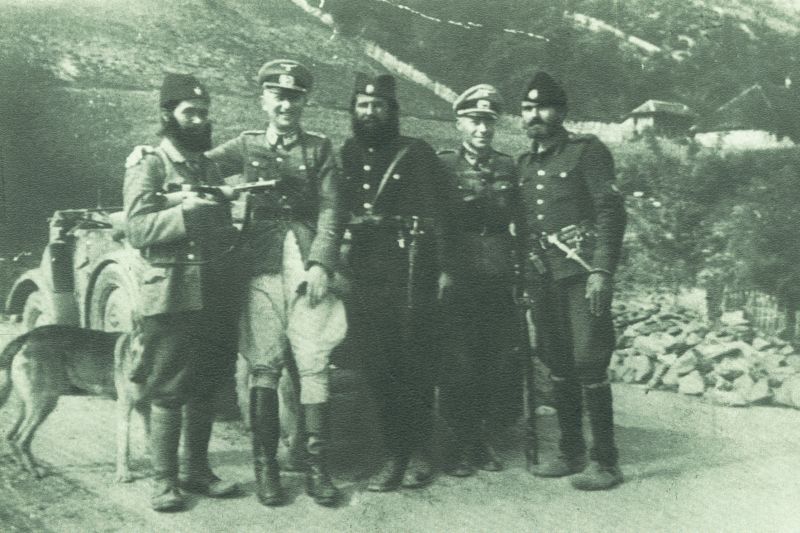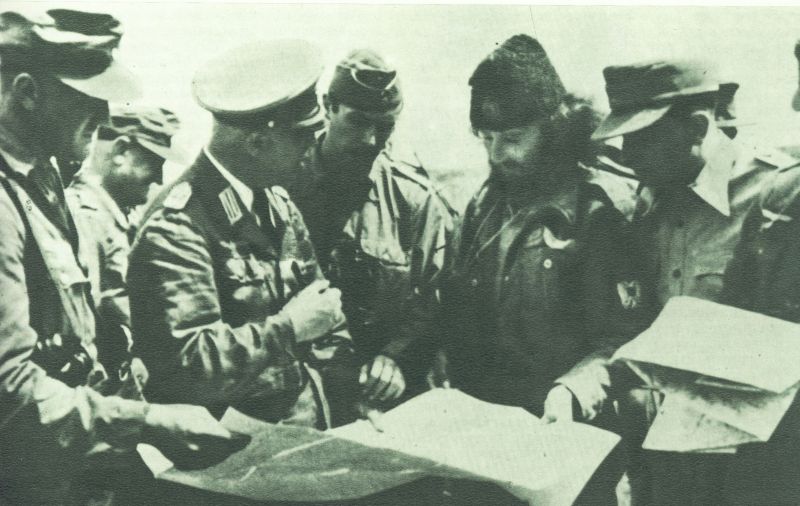E gjeta ne nje forum tjeter, lol
The Righteous Among The Nations
In 1934, Herman Bernstein, the United States Ambassador to Albania, wrote:“There is no trace of any discrimination against Jews in Albania, because Albania happens to be one of the rare lands in Europe today where religious prejudice and hate do not exist, even though Albanians themselves are divided into three faiths.”
Albania, a small and mountainous country on the southeast coast of the Balkan peninsula, was home to a population of 803,000. Of those only two hundred were Jews. After Hitler’s rise to power in 1933, many Jews found refuge in Albania. No accurate figures exist regarding their number; however, different sources estimate that 600-1,800 Jewish refugees entered that country from Germany, Austria, Serbia, Greece and Yugoslavia, in the hope to continue on to the Land of Israel or other places of refuge.
Following the German occupation in 1943, the Albanian population, in an extraordinary act, refused to comply with the occupier’s orders to turn over lists of Jews residing within the country’s borders. Moreover, the various governmental agencies provided many Jewish families with fake documentation that allowed them to intermingle amongst the rest of the population. The Albanians not only protected their Jewish citizens, but also provided sanctuary to Jewish refugees who had arrived in Albania, when it was still under Italian rule, and now found themselves faced with the danger of deportation to concentration camps.
The remarkable assistance afforded to the Jews was grounded in Besa, a code of honor, which still today serves as the highest ethical code in the country. Besa, means literally “to keep the promise.” One who acts according to Besa is someone who keeps his word, someone to whom one can trust one’s life and the lives of one’s family. Apparently this code sprouted from the Muslim faith as interpreted by the Albanians.
The help afforded to Jews and non-Jews alike should be understood as a matter of national honor. The Albanians went out of their way to provide assistance; moreover, they competed with each other for the privilege of saving Jews. These acts originated from compassion, loving-kindness and a desire to help those in need, even those of another faith or origin.
Albania, the only European country with a Muslim majority, succeeded in the place where other European nations failed. Almost all Jews living within Albanian borders during the German occupation, those of Albanian origin and refugees alike, were saved, except members of a single family. Impressively, there were more Jews in Albania at the end of the war than beforehand. Albania
Historical Background
Following the Wannsee Conference, which was convened in January 1942 to coordinate the "Final Solution", a protocol was produced with a table of the numbers of Jews that were to be murdered in each country. The number given for Albania – the small country in the Balkans, whose population is mostly Muslim – was 200. However in reality the number of Jews was higher – around one thousand Jews had fled to Albania, hoping to be able to emigrate from there. In April 1939 Albania was occupied by Italy. Although the Jews were forbidden to leave the country and some of the refugees were put in a camp in Kavaje, the Italians refused to comply with Germany's demand to hand the Jews over. In September 1943, when the regime in Italy changed, Albania came under German control. In the beginning of 1944 the Germans ordered the Jews to register, but Albanians, including government officials, helped the Jews to flee from Tirana. They found refuge with Albanian families and with partisans. We know only of two cases where Jews were captured and deported. Mrs. Bachar and her children were deported to Bergen Belsen, but survived. Yitzhak Arditi was deported with his wife and four children – only the father survived. All the other Jews survived the war. The assistance afforded to the Jews may have been grounded in an Albanian code of honor – “Besa”. Besa literally means “to keep the promise”; its significance was that once a family was hosted by Albanians, they could trust them with their lives.
Yad Vashem
About Albert Einstein:
At this time, Albert Einstein was living in Princeton and had taken a position at the Institute for Advanced Studies. In 1933, Einstein had been compelled to immigrate to the United States due to the rise to power of the Nazis. While visiting American universities in April, 1933, he learned that the new German government passed a law barring Jews from holding any official positions, including teaching at universities. A month later, Einstein also learned that his name was on a list of assassination targets, with a "$5,000 bounty on his head". He had traveled to the United States via Albania in 1935. He stayed in Durrës for three days as a guest in the Albanian royal mansion, and was equipped with an Albanian passport; he continued his journey to the United States. The gesture of the Albanian King Zog is said to be part of the traditional Albanian besa (honor), according to which many Jews (including Einstein) were saved from Nazi forces prior to and during World War II. Among other German scientists forced to flee were fourteen Nobel laureates and twenty-six of the sixty professors of theoretical physics in the country.






 Përgjigju Duke Cituar
Përgjigju Duke Cituar
 burimi me i mire eshte libri.
burimi me i mire eshte libri.






Krijoni Kontakt